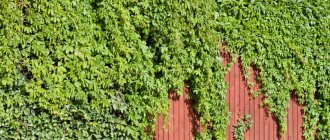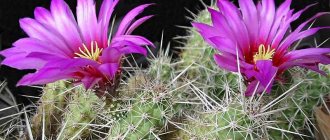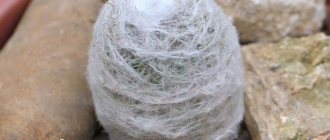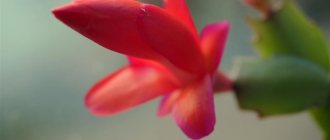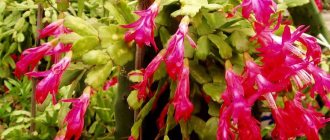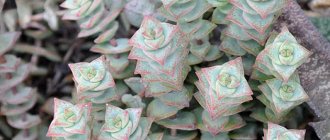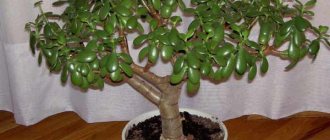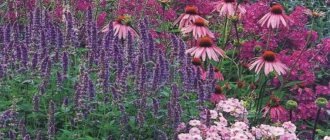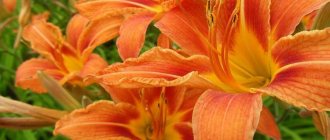Ground cover perennials are simply indispensable for landscape design, complementing and emphasizing compositions of tall plants. Besides, they are no less beautiful in themselves. They create entire lawns and clearings in the garden with muted greenery and delicate flowers. Most perennials creeping along the ground are unpretentious and, if chosen correctly, will delight the eye with their elegant beauty for many years.
Garden design with tall and creeping plants
Benefits of growing ground cover perennials
Unlike ordinary annual garden crops, groundcover perennials require virtually no care other than annual fertilizing and timely thinning. Creeping flowers can be grown in any region of the country, since among their diversity it is easy to choose a plant suitable for a specific climatic zone. In addition, many of them feel good in rocky areas with poor soil, where not a single ornamental crop takes root.
Comment! This makes it possible to grow a blooming multi-colored “carpet” in almost any corner of the garden.
The main advantages of planting ground cover perennials on the site:
- displacement of weeds;
- soil protection from erosion and drying out;
- rapid growth.
In addition, wintering perennials grow independently, are unpretentious and do not require special attention. They do not need to be sown every spring; most species tolerate low temperatures in winter and direct sunlight in summer, with the exception of heat- or shade-loving ones.
Shrubs from the coniferous family
Coniferous plants decorate the garden all year round. Among them there are shrubs that spread above the ground at a height of 30-50 cm, and those that spread their paws directly on it.
Coniferous plants with a creeping form are found among junipers and yews:
Juniper horizontalis Glauca. This plant creeps along the surface of the earth, scattering whip-like branches at the end. In the horizontal plane it can grow up to 3 meters.
Savin. Unlike the previous one, this prickly coniferous plant is more powerful and taller. Its horizontal branches spread above the ground at a height of thirty centimeters.
The maximum height at the age of 10 years can reach 50 cm.
Yew berry. The ends of its long branches fall to the ground. The height of the plant in adulthood is no more than 30 cm. It can reach three meters in diameter.
Low representatives of coniferous thorny shrubs require no more care than their tall relatives:
Coniferous creeping shrub
Protection from the early spring scorching sun. After winter, the needles emerging from under the snow are more sensitive to scorching rays, and the sun is more active. At this time, the plant needs to be shaded with lutrasil or other non-woven material for several days.
Treatment against pests and diseases. Every season they need to be sprayed against diseases and pests.
The needles will look healthy if the plant is treated with Ferrovit in early spring and mid-summer and fertilized with Fertika for conifers.
Conifers are unpretentious and beautiful at any time of the year. Perhaps these qualities will force the gardener to make a choice in their favor.
Types of ground cover perennials
There is no strict classification of groundcover perennials. However, all representatives can be divided into groups according to the following parameters:
- type of foliage cover – deciduous, evergreen;
- attitude to lighting – shade-tolerant, light-loving;
- soil moisture requirements – moisture-loving, drought-resistant;
- growth rate – fast growing, slow growing;
- flowering time – early flowering, late flowering, decorative.
Advice! Taking these parameters into account, you can choose plants for your site so that, from early spring to late autumn, flower arrangements will delight the eye.
Types of shrubs
The role that shrubs play in garden design cannot be replaced by any flower. Shrubs are:
- Large ones.
The height of such shrubs in adulthood is over three meters. Decorating the area around the house with creeping shrubs - Medium tall. At the age of 10 years, this plant will not be taller than 3 meters. On average, its height is from one and a half to three meters.
- Not tall. This type of shrub grows no more than 1.5 m.
- Dwarf. The height of such a plant is no more than 50 cm.
- Creeping. This baby, even at a very adult age, is not taller than 30 cm. But in the horizontal plane it can grow up to 3 meters in diameter.
Shrubs are divided according to the type of leaves:
- Deciduous Leaves fall in autumn. Before falling, the leaves may take on an interesting color.
- Semi-evergreen. Before the winter dormant period, some of the foliage falls off.
- Evergreen. Almost all coniferous and some deciduous shrubs belong to this type. All the foliage remains on them in winter.
Shrubs have many advantages:
- Doesn't require much hassle
- No need to plant every year
- Can be planted in the garden from early spring to October
- No need to constantly trim off faded inflorescences
- Even in winter and without leaves they create garden architecture
In order not to make a mistake when choosing a shrub, the gardener must decide for himself what he wants. For example, so that the leaves do not fall off during the winter. Or he prefers the variety of summer and autumn colors of deciduous shrubs.
Creeping perennial flowers
This variety of groundcover perennials is used to create small decorative areas along borders, fences or on an alpine hill. Since most of them are low-growing, it is more appropriate to plant them in the foreground of a garden composition.
Attention! Most creeping perennials grow rapidly, taking up space not only from weeds, but also from cultivated plants.
Iberis
A perennial frost-resistant semi-shrub ground cover plant that came from the Mediterranean, belongs to the Brassica family. It has dense greenery of rich color and snow-white umbrella inflorescences that abundantly cover the bush.
During the flowering period, it emits a strong, pleasant honey aroma.
It reaches a height of 25-35 cm, narrow oblong leaves 5-7 cm long, located alternately on the branches. Iberis is widely used to decorate gardens and terraces and is planted near gazebos.
Aubrietta
Creeping perennial, evergreen, ground cover, herbaceous plant native to Central Asia, belongs to the Brassica family. It is frost-resistant and gets along well with other garden crops.
The color of obrietta inflorescences can be white, blue, lilac, pink or crimson
The bush is low-growing, reaching a height of no more than 15 cm. Jagged green leaves of an oblong shape are almost completely covered with densely growing four-petaled bright flowers. This perennial is often used to decorate flower beds or plant vertical compositions.
Dianthus
This perennial ground cover crop can be found throughout Europe; it belongs to the Clove family. The herb lives up to nine years and tolerates low temperatures down to -40 °C.
The flowering period of grass lasts about one and a half months
The ascending stems of the plant reach 10-15 cm high and are covered with small elongated bluish-green leaves. The color of small (up to 1.5 cm) flowers varies from soft pink to deep red.
Decorative deciduous shrubs for borders and low hedges
Fences on the site are created for different purposes. Borders or low hedges are very interesting both in the front part of the site and along the central path or lawn. Such low borders themselves can become an independent element in the garden. The main thing is that they are always tight and neatly trimmed.
Unpretentious and at the same time very beautiful decorative deciduous shrubs suitable for creating borders or low, up to half a meter, hedges include low-growing species of barberry, rhododendron, boxwood, cotoneaster, honeysuckle, caragana, fortune's euonymus, gorse, cinquefoil, mahonia , low almonds, well-known currants and gooseberries, snowberry, spirea, chaenomeles.
Low-growing barberry species include boxleaf barberry (Berberis buxifolia Nana).
The evergreen boxwood barberry (Berberis buxifolia Nana) is very decorative at any time of the year, unpretentious in care, grows well even on dry sandy soils, develops well both in the sun and in partial shade, and tolerates pruning well. By the way, barberry can also be used for landscaping a balcony or terrace.
For low borders, you can use a low and dense variety of boxwood (Buxus sempervirens Suffruticosa) - a slow-growing evergreen shrub with very beautiful shiny dark green leaves.
Boxwood is perfect not only for decorating a balcony in an oriental style, but also for ceremonial trimmed borders. Several varieties of boxwood have been developed, which differ not only in leaf shape, but also in the variegated color of the leaves.
Boxwood is shade-tolerant and drought-resistant, prefers fertile, loose soil without stagnant water. For the winter, it is advisable to cover boxwood with agrospan to protect the leaves from winter and early spring sunburn.
For border plantings, it is quite possible to use some varieties of Fortune's euonymus (Euonymus fortunei) - a slow-growing, very low, creeping shrub up to half a meter high with long, up to 3 meters, shoots that easily take root in the internodes. These shoots are quite capable of clinging to support, if there is one. Fortune's euonymus has green, small, leathery leaves 2–5 centimeters in length.
This species, as well as its hybrid forms, for example, the variegated Fortune euonymus (Euonymus fortunei Variegatus) with white-green leaves and pink veins, which can also be used as a ground cover. And the ripening fruits will not only add decorative value to the bushes, but will also serve as food for birds.
Fortune's euonymus prefers hemifields, is quite drought-resistant, and tolerates pruning well.
Caragana has long been used as an ornamental plant. Maybe most of us know it as an acacia growing in forest belts and parks, but in fact it is a caragana. For example, species such as spiny caragana (Caragana pygmaea) and orange caragana (Caragana aurantiaca) can even create impenetrable thickets if they are not cut.
Orange caragana is a loose bush up to 1 meter high with numerous protruding shoots.
It grows well in urban conditions, tolerates drought well, and is not at all demanding on soil fertility. It needs to be trimmed constantly to get a continuous green border. The prickly caragana differs from the orange caragana only in its yellow flowers.
Snowberry is very beautiful in a hedge . Snowberry is a deciduous shrub up to 1–1.5 meters in height, especially beautiful in the fall, during long fruiting, when the branches bend under the weight of numerous white berries, truly reminiscent of small snowdrifts. Or maybe it’s called that because the berries on the bush last a long time, right up to the snow.
Snowberry grows very quickly, is completely unpretentious in care, prefers open sunny places, calcareous soils. Grows well in urban conditions with insufficient watering. It tolerates pruning and bush shaping well. Sometimes in harsh snowless winters it can freeze, but it recovers very quickly.
For a low hedge, you can use semi-evergreen glossy or shiny (Lonicera nitida) with many lodging shoots, abundantly dotted with shiny green oblong leaves.
Lustrous honeysuckle grows well on both sandy and clay soils, if measures are taken to increase fertility and the soil is made water- and breathable. It grows well in open, sunny places and in partial shade. Lustrous honeysuckle is heat-loving, so in our climate it loses its leaves in the winter and can freeze, so it requires shelter for the winter.
and honeysuckle (Lonicera pileata), distinguished from the first by its fragrant pale yellow flowers. It bears fruit, the fruits are medium-sized, about the size of a cherry, purple in color. Honeysuckle can grow in both sun and partial shade; In addition, it is more hardy than glossy honeysuckle, but in cold winters it still loses its leaves.
As a hedge, you will not be disappointed with some types of hydrangeas, such as tree hydrangeas, as well as spireas (Spiraea). All spirea are unpretentious, highly decorative in appearance and very flexible to use, beautifully flowering shrubs. Among the variety of varieties of spirea, you can always choose a plant according to your preference, focusing on the height of the plant, the flowering period or the color of the flowers.
Spireas grow and bloom well with sufficient lighting and soil fertility, and the absence of stagnant water in the ground. Young spirea need shelter for the winter. All spirea tolerate pruning well.
Rhododendrons (Rhododendron) are one of the shrubs unsurpassed in their decorative qualities, the flowering of which is distinguished by an incredible variety of shapes and colors. For low borders, low-growing, compact hybrids created on the basis of rhododendron Yakushimanum, dwarf hybrids of the Repens group, and Kamchatka rhododendron are ideal - a low spreading shrub with lilac-pink flowers.
However, rhododendrons are very demanding on growing conditions. They need lacy partial shade or sun, and need protection from cold northern winds. Almost all types of rhododendrons require an acidic soil reaction and prefer very fertile, permeable soils. In addition, evergreen species of rhododendrons must be protected with agrospan from the winter and early spring sun so that the leaves do not get burned.
The best evergreen deciduous plants used in hedges include aquifolium . Some sources place it in the genus Berberis aquifolium.
Low, up to 1 meter high, hedges made from Mahonia holly are good both when growing freely and when trimmed. Mahonia holly looks very fresh throughout the year, of course, thanks to its juicy dark green shiny leaves. The edges of the leaves are sharp-toothed. And since the leaves remain on the bush even in winter, a mahonia hedge always attracts attention.
In spring, its yellow flowers are charming. By winter, the leaves of Mahonia holly become dark red and purple. Ripe bluish-black fruits hanging from the bush in whole clusters also increase the decorative value of the bush. In such a luxurious outfit, Mahonia goes into winter.
Mahonia grows well in moist, even clayey and silty soils with a high lime content. Prefers partial shade, but can grow in both open areas and shade. If you want to have a low border of the correct shape, then do not forget about cutting, which is recommended to be done immediately after flowering or in the fall, before the arrival of winter. In the conditions of the middle zone, holly mahonia will require shelter for the winter.
Low almond , or steppe almond (Amygdalis nana = Amygdalis tenella = Prunus tenella) is a low, up to 1–1.5 meters tall, branched deciduous shrub, especially beautiful in early spring, when it blooms with very bright, attention-grabbing pink flowers that bloom together with leaves. Almonds are unpretentious, so they can be successfully used to create permanent garden compositions and flower beds.
Low almond prefers sunny places, tolerates drought easily, and can grow on poor sandy soils. On clay soils, almonds will have to be drained, since they absolutely cannot tolerate stagnation of water in the soil.
For low borders, suitable cotoneaster (Cotoneaster dammeri), pressed cotoneaster (Cotoneaster adpressus), horizontal cotoneaster (Cotoneaster horizontalis). Dummer's cotoneaster is a groundcover evergreen shrub with long, easily rooted shoots and small, up to 4 centimeters, oval leaves. In autumn, the ripening red fruits add decorative value to the cotoneaster.
Cotoneaster is a deciduous ground cover plant. It has small, up to 1.5 centimeters, rounded leaves. Red fruits also ripen in September.
Cotoneasters are undemanding to soil fertility, can grow in open sunny places and in partial shade, do not tolerate severe waterlogging, but are very responsive to watering in dry times. During the winter, these types of cotoneasters need to be covered, as they freeze slightly.
Very decorative cinquefoil. For low hedges, Daurian cinquefoil (Potentella davutica) and bush cinquefoil (Potentella fruticosa) are quite suitable.
Cinquefoil Dahuriana is a low deciduous shrub up to 1 meter high, blooming all summer with white flowers. Cinquefoil shrub - neat shrubs with a rounded shape, but slightly taller than the cinquefoil Daurian, blooms with yellow flowers, there are varietal forms with white, pink and red flowers. Potentillas are unpretentious in care and grow well in an open sunny area with minimal watering and fertilizing. They tolerate haircuts well and do not require shelter for the winter.
For dry areas with depleted soil for hedges, you can use a steppe plant such as gorse (Genista tinctoria) - a dense bush up to 1 meter high with thin shoots directed upward. The shoots are covered with narrow pale green leaves. Blooms with bright yellow flowers. The shrub is very unpretentious, although in snowless winters it can freeze, but quickly recovers.
Rose , in no way inferior in beauty to rhododendon, rather, equal among equals, is a worthy representative of ornamental garden shrubs. For low borders, it is quite possible to use ground cover, miniature, patio, polyantha and even some low-growing varieties of floribunda roses. Whether neatly trimmed or growing freely, roses never leave anyone indifferent.
However, to ensure that roses are always in excellent condition, you need to work hard: roses are quite whimsical. They need nutritious soil, moderately moist. Roses need both thinning and sanitary pruning. All roses need to be covered for the winter.
For some reason, we are accustomed to currants (Ribes) and gooseberries (Grossularia) only as fruit bushes. However, it is worth looking at them from a different perspective. Any currant is decorative during the growing season: in spring, during flowering, and in summer, during fruiting, and even without fruit.
alpine currant is quite suitable - a compact and fairly dense deciduous shrub up to 1.5 meters in height, a dioecious plant, female specimens are suitable for fruiting. True, the berries of alpine currants are tasteless. Alpine currant is quite unpretentious, grows well in sunny areas, is undemanding to soil, but when fertilized the bush is much denser, tolerates pruning well, and does not need shelter.
Chaenomeles japonica hedge is very decorative. japonica , or Japanese quince , is a dense deciduous shrub up to 1 meter tall. Chaenomeles is very beautiful during flowering, when it is covered with marvelous red flowers. When set, small round fruits with a pleasant lemon taste and smell are formed, from which jams and preserves are made.
However, Chaenomeles japonica requires protection from northern winds. It is light-loving and grows best in fertile, well-drained soils. In winter, the shoots may freeze slightly, but in the spring they quickly recover. In case of strong thickening, thinning is required.
From this list, it is quite possible to select plants that are ideal for your site, depending on the requirements for maintenance conditions, fertility, acidity and soil moisture.
There is absolutely no need to go against nature and plant mahonia or rhododendron on poor dry soils, or almonds, gorse or boxwood in wet wetlands. Only plants that are ideally suited to your conditions will grow quickly, become a real highlight of the garden, and most importantly, will not require much care.
See also: Ornamental deciduous shrubs for medium-sized hedges
Used literature: Konovalova T.Yu., Shevyreva N.A. Ornamental shrubs, 2004 Image source flickr.com: Leonora Enking (5), John Hickey, Ron Gay, Deborah Cowder, www.jardinerosenaccion.es, Janette Dollamore, Tracey Stout, Jodi, Stefano, peganum, Josef Lex (mission accomplished!) , Matt Lavin, Mountain Partnership at FAO, per.aasen, Cheryl Moorehead, Andreas Balzer, Dietmut Teijgeman-Hansen, flemertown, dangle earrings, Maja Dumat (2), Daniela Ionesco, Diddlecome Dawcock, Paul Simpson, Eirien, Yasuki Fujinuma, Ron Wolf, Nobuhiro Suhara (2), Steve Garvie, Jens Schmidt, David Trevan, Ben Rushbrooke, Jan Sølve Borlaug, Marcel, stanze, jacqueline (Jackie) ramsey, naturgucker.de / enjoynature.net, Wulf Forrester-Barker, Nacho, Mark Watts, gartenknorze, Helge Vindenes. Ruschi. Carl Lewis, Martha B. Moss, L'herbier en photos, Stephanie, jlcummins - Washington State, matt hirt, Andrew Caird, photopoésie, Betsy, tesselaarusa (2), -eney- (3), Marc Kummel, Sirpa Tähkämö, Dan Davis, Kirill Ignatyev, FarOutFlora, Rainer Fritz
Ground cover perennial flowers
Such groundcover perennials are sown in garden plots between fruit trees or on rocky slopes.
Important! They quickly take over the territory with their shoots, turning a lifeless landscape into a blooming garden.
Thrift
A perennial ornamental herbaceous plant that naturally lives on the mountain slopes of North America, Eastern Europe, Mongolia and the Mediterranean, it belongs to the Vinaceae family. The dense basal rosette of this ground cover perennial is formed from narrow linear-lanceolate leaves and reaches a height of 15-20 cm (during the flowering period - up to 60 cm).
Read more Shade-loving perennials for shady places, for the garden The inflorescences are quite large - about 5-7 cm in diameter
They are capitate, formed from small flowers of white, pink or purple hue. Armeria begins to bloom in May and continues until the beginning of October. It tolerates frost and prolonged drought well, is unpretentious, and thrives in poor rocky or sandy soils.
Alyssum
This groundcover perennial plant can be found in nature in North Africa, Europe and Asia; it belongs to the Brassica family and has more than 100 species. Strongly branching stems reach a height of 15-40 cm and are covered with small pubescent leaves of an obovate shape.
Alyssum flowers have a distinct honey aroma, which attracts bees
Racemose inflorescences consist of small flowers in white, yellow, lilac, purple, pink or red. The flowering period begins in May and ends in late autumn.
Phlox subulate
This fast-growing, profusely flowering groundcover perennial can be found in the wild on the rock embankments and sandhills of North America. The stems of the plant are 15-17 cm high, densely covered with hard leaves up to 15 mm long.
Phlox subulate forms evergreen and dense carpets in the garden
Pink, white, purple or lilac flowers are quite large - up to 25 mm in diameter, collected in inflorescences of 5-7 pieces. Phlox blooms twice a season: from mid-May to late June and from August to September.
The most popular varieties
creeping thyme
This is one of the most popular ground cover perennials. It has another name - thyme. This plant has an interesting property: it changes its color twice a season.
The color of thyme before, during and after flowering is radically different.
The plant has many climbing emerald shoots, the length of which reaches 20 cm. The structure of the foliage is dense, rigid with significantly protruding ends. Begins to bloom in June or July. The process continues for up to 75 days.
It is unpretentious in the choice of soil; no watering is required. It grows even on rocky soils.
Thyme is classified as a medicinal herb. For prevention purposes, it is recommended to walk near lawns with this amazing plant.
It is located not only in large areas, it is actively used to create rock gardens, grown in small containers and in stone gardens.
Kotula
This is a perennial belonging to the Astrov family. Has about 80 varieties. It looks very attractive and is an excellent decoration for any garden.
Cotula has small yellow flowers that look like neat dandelions on a green carpet.
The leaves are small, like those of a fern, with a large number of small teeth. The stem itself contains up to 20 pairs of leaves. Flowering occurs once per season and lasts up to 45 days.
It is better to plant in enriched loamy or clayey soil; it can also grow in sandy soil.
To make flowering more luxuriant, phosphorus-potassium fertilizers are used in the spring. Most often, fertilizing is carried out in the first or second ten days of May.
Saxifrage
The plant has a powerful rhizome of complex shape. Grows on any land, even in rocky, mountainous areas.
The leaves are round in shape and collected in so-called rosettes. The color varies from light to dark shades of green.
There are varieties with leaves that have a glossy surface.
The perennial forms beautiful carpets that look like pillows. Moreover, the bushes are quite dense and bunched up that it can be very difficult to separate them with your hands.
Saxifraga is perfect for decorating rockeries or alpine slides. A very successful combination with coniferous species, especially if the area is a rocky slope. Thus, the dark shades of green conifer contrast advantageously with the rich background of the ground cover bushes.
Flowering begins in early June, which lasts about a month.
There are a lot of flowers and most often they are pink or white.
There is no need to water or fertilize, since the plant has a powerful root system that is fed with nutrients from almost any soil.
Phlox subulate
This cover plant is small in height, often up to 15 cm. The flowers are purple or dark blue. The stems are quite thin, and the flowers have a diameter of about 2 cm. Phlox blooms already in August, in the early days, but flowering continues until the beginning of November.
Prefers fertile soil, but can grow in poor soils provided the necessary fertilizers are applied. Can be grown in dry lands, does not like shady and semi-shady areas.
Pink
This huge family is represented not only by roses and rosehip bushes.
There are several dozen low-growing varieties with a height of no more than 20 cm.
Such species adapt perfectly to any environmental conditions and can easily tolerate harsh cold winters.
Pinks have a wide variety of species. The most commonly used ground cover plants with short growth are:
- acena - a crop that covers entire fields, the flowers have a red-pink tone, grows well in open ground with an alkaline environment;
- Indian Duchesnea - resembles strawberries, but has a denser thick cover that hides the ground; the berries are very beautiful, but inedible.
Sedum Evers
A perennial cover that forms a thick carpet of beautiful pink flowers. In another way, the variety is called shoot-bearing. He prefers shade, as he is very sensitive to the effects of sunlight, even to the point of burns. The height is low - about 15 cm.
The flowers have 5 white petals, bright green foliage with a dense and fleshy structure. Sedum loves rocky or sandy soil. There is no need to apply fertilizer. However, it is necessary to periodically clear the area of weeds.
Periwinkle
It is a climbing evergreen that grows in the shade under large spreading trees. The flowers are five-leaved, up to 2 cm in diameter, blue or all light shades of purple.
Flowering continues almost throughout the summer season.
The plant does not particularly require care and is resistant to external conditions. It is worth watering periwinkle only to improve its decorative qualities, since water cleanses the leaves of dirt and dust, and it becomes more attractive.
Shoots take root approximately every 50 cm. The crop reproduces intensively using seeds, for this reason the plant quickly covers a large area of the site.
Experienced gardeners recommend that every year in the autumn months, trim along the entire perimeter and remove those shoots that are located near the boundaries of the territory.
Carnation
Some varieties of this plant are small in stature and have a thick, dense cover. There are about 30 species. The differences are:
- the height of the deciduous carpet is usually up to 20 cm;
- length of peduncles - up to approximately 25 cm;
- color palette and diameter - variations from white to rich red-violet.
All varieties are characterized by a love of moisture and sunlight.
It is worth noting that carnations grow in the same area for quite a long time, most often more than 10 years, and serve as an excellent decoration for the garden throughout this time.
Also, the species diversity of the crop includes a huge number of other plants with similar external characteristics and agricultural technology. For example, cloves such as:
- bryozoan;
- Highlander;
- purslane;
- gerbil;
- grass;
- splint;
- thrift.
These species love moisture and can grow even in poor soil. Most of the presented plants have foliage with a smooth surface, although there are, for example, the lily and drooping ones. The flowers are usually small, solitary, approximately 20 mm in diameter. But in Armeria, opposite, the flowers form a beautiful round inflorescence.
Rejuvenated
The succulent is widespread in summer cottages due to its ease of care and extraordinary decorative component. The plant has fleshy foliage that gathers in spectacular rosettes. There are 20-30 cultivated varieties. They are ideal for use as ground cover plants.
The foliage and flowers have a wide range of colors, ranging from silver to dark red.
Each variety is represented by a different form of bushes, foliage, stems and inflorescences.
If the young are left uncontrolled, they will very quickly conquer vast territories. Its strong shoots can even grow through asphalt.
Loves dry soil, well-lit areas. Resistant to prolonged drought. The plant can be grown at home, and some varieties bloom even in winter.
Creeping tenacious
The name absolutely matches this ground cover crop, since it does not require special care, and the shoots have incredible endurance and survival in almost any conditions.
The tenacious plant can spread very quickly; in just a few seasons, one perennial bush can cover an area of several hundred square meters.
The leaves of the plant have rather long petioles of a dark green hue with red veins. Flowering begins in May or June. It is characterized by splendor, and often there are so many flowers that they cover both the leaves and the soil. They gather in inflorescences resembling a spike. Shades range from violet to lilac.
The intensity of growth and development of creeping tenacious is significantly reduced if there is no moisture in the upper layers of the soil. This is due to the fact that the depth of the root system is no more than 30 cm. Therefore, if you need to grow a fairly acceptable lawn, it is recommended to water the plant on a regular basis.
Ground cover perennials for the garden
Ground cover perennials allow you to create bright areas in the garden that stand out among the trees and shrubs. They are used to decorate slopes, rock gardens, and the banks of artificial reservoirs, since with their beauty they enliven raw stones and add bright colors to the overall appearance of the composition.
Veronica
An herbaceous or semi-shrub groundcover perennial, belongs to the Plantain family, and grows in nature on the edges of forests and meadows. There are about 150 species in Russia, and more than 300 around the world.
The culture loves open areas, tolerates drought well, and is winter-hardy.
The inflorescences are blue, dark blue, pink or white and look like a spikelet or brush 12-14 cm long. The perennial reaches a height of about 50 cm, the flowering period lasts 40 days, starting in mid-July.
Heuchera
It is distinguished by a wide range of foliage colors, thanks to which it remains decorative from early spring until late autumn. Belongs to the Saxifraga family, the crop is used for landscaping rock gardens, parks, and planted along alleys and in front flower beds.
Heuchera foliage can be red, green, purple, yellow or silver-gray
The perennial has compact bushes, reaching a height of 40-50 cm, with leathery petiolate leaves, which can change their color several times during the growing season. It blooms throughout the summer, producing small white, cream or pink flowers on long peduncles.
Bryozoan
This herbaceous groundcover perennial belongs to the Carnation family. It is widespread throughout Europe and Asia. Used to create lawns on rocky terrain.
The greenery of bryozoans visually and to the touch resembles soft moss
The branched creeping stems of the groundcover perennial extend no more than 10 cm in length and are densely covered with bright green, narrow leaves, similar to needles. Shoots and foliage have glandular fibers. It blooms from July to September, producing white five-petalled inflorescences up to 5 mm in diameter on a bare peduncle.
Ground cover coniferous perennials
In landscape gardening, coniferous groundcover perennials are widely successful because they are evergreen. They are used in group or single compositions, making coniferous flower beds and entire alleys. With the help of well-chosen plants, the garden will amaze with its beauty and well-groomed throughout the year.
Read more Perennials overwintering in open ground
Chinese juniper
This dioecious or monoecious evergreen ground cover perennial belongs to the Cypress family. The bush reaches a height of 20-25 cm and has a columnar, narrow or wide conical shape.
Does well in both partial shade and sun
Thin dark green shoots with grayish-red bark are densely packed with needle-shaped needles. Elongated or spherical cones, covered with a whitish coating at the beginning of ripening, later acquire a brown tint.
Juniper horizontal
You can also often find the name “prostrate”; it is an evergreen ground cover dwarf shrub that grows in width. The dense bluish-green needles turn purple in winter.
Juniper looks great in winter, peeking out from under the snow
Gardeners often use horizontal juniper in garden landscaping to create slopes, lawns, and are also grown in containers for decorating terraces and gazebos.
Juniper Cossack
Evergreen bushes of Cossack juniper decorate the front entrances of office buildings, city squares, and parks. The bushes of this ground cover coniferous perennial, which belongs to the Cypress family, grow up to 5 m in width.
Dwarf varieties reach from 30 to 50 cm in height, but there are also tall ones - 1.5 m
The erect, soft, needle-shaped needles of the perennial acquire a gray-green hue with age. The greenery grows quickly, giving an annual growth of 15-17 cm.
Using ground covers in garden design
Due to their high decorative value, groundcovers are widely used by modern summer residents - they can be used to beautifully decorate miniature compositions - used as a background for creating an alpine slide, planted between stones in a rock garden, they look beautiful both along paths and in flower beds in combination with other flowers.
For a large open space, large plants of this type, for example, Rogers, are more suitable. In small areas, carnations, varieties of sedum, lilies of the valley and other miniature ground covers look great.
Here are some tips on how to plant beautiful groundcovers in your garden:
- plant groundcover perennial flowers of different types in groups so that the colors of the leaves, their inflorescences, height and shape contrast with each other;
- plants of the same species look picturesque when planted in large groups or as a frame for a flower bed;
- when planting, keep in mind that the groups will quickly grow in width, connecting with each other and forming a real living carpet;
- It is important to control the population and the area occupied by the group if you do not plan for it to soon occupy the area reserved for other flowers.
As mentioned above, caring for ground covers is very simple. Every year in the spring, plants need to be mulched and weeded. At the end of the season, shoots and leaves that have lost their beauty are removed. The plants are unpretentious, therefore, whether to feed them and in what quantity is up to each gardener to decide according to the situation.
Low-growing groundcover perennials
This type of groundcover perennial is mostly shade-loving and feels good under trees, in the shade of walls and garden buildings. Generally, low-growing perennials are not capricious even after flowering.
Advice! They can easily be used as a lawn because they are resistant to trampling.
Kopyten
This charming garden inhabitant does not stand out from other crops, creating an advantageous background. It is distinguished by dim, unobtrusive greenery and modest flowers of yellow or red.
Clefthoof creates dense cover in the shade of bushes and trees
Refers to perennial ground cover evergreen herbaceous plants from the Kirkazon family. It got its name due to the characteristic shape of the leaves, reminiscent of a horse's hoof. It grows 15-17 cm in height and blooms in May.
Umbilical
This shade-tolerant groundcover perennial stands out in the garden with its vibrant blue flowers and year-round green foliage. It grows no more than 20 cm in height, the flowering period falls in May-June.
The flowers are similar to forget-me-nots and range in color from white to deep blue
Creeping shoots take root on their own, forming daughter rosettes. Thanks to this feature, the Umbilical is growing rapidly. It tolerates long-term drought well and responds negatively to high soil moisture.
Monetary loosestrife
This herbaceous groundcover perennial has the form of a bush with erect or creeping stems. Belongs to the Primrose family and can be found in nature in Africa, North America, and Siberia.
In its natural environment it grows in dense forests and on the banks of water bodies.
It has round, ovate or coin-shaped leaves, silky to the touch. Single bisexual yellow flowers bloom on long stalks growing from the axils of the leaves. The flowering period of the perennial is the beginning of May and the end of September.
Features of perennial cover plants
Most of these plants have small rhizomes. For this reason, they are planted not only separately, but also among other crops, and are often placed under trees. They are quite resistant to cold. They have a small growth, thanks to which the climbing flowers spread in a lush carpet. Spread occurs through creeping shoots or underground root system.
When choosing a groundcover perennial, you should focus on the subtleties of cultivation, namely:
- resistance to cold is an important characteristic, which is a determining factor indicating the durability of the planting; for this reason, it is worth carefully selecting varieties in accordance with a specific region and its climate;
- growth intensity - with the right choice, you can calculate when the entire required area will be covered with a grassy carpet after 2-3 years, or much more time will pass;
- indicators of plant resistance to various diseases and insect pests;
- period of crop recovery after sanitary pruning;
- level of aesthetic component.
In practice, it is quite difficult to combine all these indicators. The ideal choice would be perennial climbing flowers, which have the same growth, are unpretentious in care and resistant to cold, develop intensively and grow limited in different areas.
Ground cover crops are divided into two large groups:
- ground cover plants perennials - include grasses, creeping species, standard perennials, ferns;
- ground cover bushes - conifers, vines, dwarf species of conifers, subshrubs.
If you want to combine different species in one area, it is recommended to choose crops from the same group. Because otherwise there is the possibility of inhibiting the growth and development of one species by another.
These perennial crops can be used in any area where you need to create a miniature green carpet, which will not only be an excellent decoration for the garden plot, but will also prevent the appearance and spread of weeds.
They can be planted in places with little sun exposure, on slopes, under trees.
Choosing perennial cover plants has a number of advantages:
- they are highly resistant to difficult weather conditions;
- in the future, care becomes easier;
- plants perfectly decorate the space;
- prevent the formation of erosion on slopes;
- Only the first years will require more careful, although simple, care.
To properly plan a place for planting flowers, you must adhere to the following recommendations:
- they try to select varieties according to the prevailing conditions, namely: the concentration of nutrients, climatic features, substrate, humidity level, level of sunlight;
- for covering small areas, low-growing and weaker individuals are used, for large areas - small specimens;
- Seedlings should be planted apart from each other taking into account the growth of the selected variety;
- in large areas it is better to use a variety of species;
- in areas around trees, perennial plants with a small root system are planted;
- After the flowers are planted, you need to sprinkle mulch around them.
Shade-tolerant groundcover perennials
In areas of the garden that are in the shade most of the day, ornamental annual plants take root poorly, do not bloom and look sick. However, you can give your garden a blooming look with the help of shade-tolerant ground cover perennials. They thrive in low light conditions and bloom actively and profusely.
Periwinkle
In the wild, this groundcover perennial creeping along the ground has only six species belonging to the Kutrovaceae family. Blooms with soft blue or pink inflorescences.
Periwinkle retains green leaves even under snow cover
Spreading perennial bushes up to 35 cm high, cover vast territories, intertwined with roots reaching 70 cm. Thin pale green branches with reddish bark are covered with opposite petiolate, oval leaves. It blooms with large single flowers of blue, purple or pink, blooming in the axils of the leaves.
Primrose
It is a herbaceous groundcover perennial, found naturally in Asia, the Middle East, Europe and northern Africa. It blooms in early spring as one of the first garden crops; it prefers places with high humidity.
One of the most popular spring primroses
Primrose leaves are simple or dissected with oblong lanceolate-shaped plates. Flowers are solitary or collected in spherical, pyramidal or umbellate inflorescences.
Read more Climbing perennials for the garden that bloom all summer: photos and names
Saxifrage
The beauty of this mountain groundcover perennial is unique. In addition, gardeners love it for its long flowering period: from May to the end of summer. In nature, it prefers a tropical climate and is found in Central America, Africa and Eurasia.
Saxifraga flowers come in white, yellow, purple or pink.
Depending on the variety of perennial, the plant reaches a height of 5 to 70 cm. The basal rosette is formed from small bluish-green leaves. From each rosette grows several flower stalks, on which single five-petaled flowers bloom.
Shade-tolerant
Periwinkle
A resilient, flowering shrub that can grow in the dense shade of trees, overwinter under a layer of snow, and be one of the first to wake up in the spring.
All varieties have a similar petal shape, but different colors: snow-white, violet, lilac, purple, lilac, blue. In landscape design, blue periwinkles are more often used. They form a thick carpet 15-25 cm high. Modern hybrids not only bloom beautifully and profusely, but also surprise with the unusual color of their foliage, such as Blue and Gold.
Kopyten
Scientists say “azarum”, and gardeners are more accustomed to calling this plant hoof for its leathery, rich emerald leaves in the shape of a hoof. The perennial readily spreads in lowlands, does not need an abundance of sunlight and even hides its few flower stalks in the undergrowth. It's a pity, because the flowers look original.
European hoofweed, the most popular representative of this type of groundcover, is moderately poisonous and has been used in Russian folk medicine since ancient times.
Pachysandra apex
This beauty belongs to the boxwood family; in nature it grows in ravines and along the banks of reservoirs, and in landscape design it is valued for its lush, juicy greenery, although it blooms with pretty white flowers. Pachysandra has long (up to 40 cm) strong stems that droop to the ground, are completely covered with leaves and are woven into an almost uncombable mass.
The apical pachysandra has firmly established itself in rock gardens, rockeries, and mixborders. It also looks great in tree trunks and grows well there, despite the shading.
Indian cinquefoil
The scientific name of this representative of the rose family is Duchesnea, but in everyday life it is better known as pseudostrawberry. The similarity is striking, but the “fake” is undemanding to growing conditions, its berries are round and its flowers are yellow. Red sparkles on a dark green background have brought this shade-loving ground cover plant popularity in landscape art.
Indian cinquefoil has healing properties, and its berries are quite edible, although they are inferior in taste to garden and forest strawberries.
Drought-tolerant groundcover perennials
You can’t do without such plants when the sun burns out the flowers planted in the spring in parts of the garden from year to year, and the estate looks dull even in summer. In such situations, drought-resistant and sun-loving ground cover perennials that can live under scorching rays will save you.
Sedum
This charming groundcover perennial is a honey plant and belongs to the Crassulaceae family. During the flowering period, it forms a whole carpet of lush inflorescences. There are approximately 500 species in the wild that can be found throughout the northern hemisphere.
Inflorescences can be white, lavender, hot pink, burgundy and burgundy brown
The stems grow up to 80 cm, covered with fleshy leaves of green, gray-green, reddish or dark burgundy. At the end of July, inflorescences appear, collected in horizontal umbrellas with a diameter of up to 30 cm.
Creeping thyme (thyme)
This groundcover perennial with stems creeping along the ground is a shrub plant reaching a height of 15 cm. Lanceolate small leaves 10 mm long have essential oil glands.
Thyme leaves exude a subtle delicate aroma
Small, two-lipped flowers of violet, lilac or pink form capitate inflorescences. The flowering period of the perennial occurs in August-September, however, even a faded plant remains decorative.
Drought resistant
Irish moss
This ground cover is something between grass and moss, thickly covers the ground and rises slightly above it - 6-8 cm. Bryozoan subulate, as botanists call it, blooms all summer with snow-white flowers that create a powdery effect. But the “snow” carpet is pleasant to walk on - the plant is not prickly.
Irish moss saves moisture and does not fade even under the scorching rays of the sun, does not give life to weeds and smells pleasantly of honey.
Creeping tenacious
Here is another perennial with a telling nickname. There is also an official name - ayuga. The tenacious plant reaches a height of up to 40 cm and produces blue-violet inflorescences in the form of false whorls. It blooms throughout the warm season and has excellent drought resistance.
Although ayuga protects the area from the spread of weeds, it itself needs to be looked after so that it does not spread everywhere.
Rejuvenated
The stone rose or youngster enchants at first sight. This groundcover evergreen perennial quickly takes root even on poor soil, does not require watering, forms a dense growth of light green “rosettes” with a scarlet border and looks stunning in alpine hills.
In Western Europe, young shoots are called “hen with chicks” because of the funny way the young shoots cluster under the mother’s rosette.
Sedums
These ground cover plants are classified as succulents and have many ornamental varieties with small flowers of different colors. All sedums are not afraid of the bright sun and are able to store life-giving moisture for a long time in their fleshy sessile leaves. The Latin name of the crop is sedum, and popularly it is called by many different names: hare cabbage, fever grass, squeaky grass.
Sedums were previously used to sanitize wounds and stop bleeding, but are now favored by landscape designers for their unpretentiousness and picturesque appearance.
Rare ground cover perennials
These plants can rarely be found in an ordinary summer cottage garden. This is explained by the fact that these types of ground cover perennials are not suitable for cultivation in the climatic conditions of the Russian Federation. Most of them came from warm countries and can only live in greenhouses or regions with a mild climate.
Dryad
This semi-evergreen ornamental groundcover perennial belongs to the Rosaceae family. It grows in both sunny and shaded areas, prefers alkaline soils, however, it also thrives in slightly salty soils.
A dryad can grow in one place for up to a hundred years.
The plant begins to grow immediately after the snow melts. The stems of the bushes, reaching 10 cm in height, are covered with short petiolate leaves 20-30 mm long. At the top of the stem there are milky-white flowers, pleasing to the eye from early July to mid-August.
What about the price
This creeping ground cover shrub prefers warm climates and is widespread in Australia, New Zealand, Mexico and South America. The perennial grows up to 10-30 cm in height; the woody branched shoots are covered with odd-pinnate leaves 7-10 cm long.
Acena leaves remain on the shoots throughout the year.
The round inflorescences of the perennial, 8-10 mm in diameter, are formed from tiny flowers that are located at the top of smooth leafless stems. The flowering period lasts from mid-July to late autumn.
Ideas for creating flower beds from ground cover perennials
In order for the flowerbed to please the eye with its beauty throughout the year, it is important to choose the right ground cover perennials, taking into account their flowering period. In addition, the composition should be composed so that the plants do not interfere with each other.
Low-growing crops should be planted in the foreground, taller crops should be planted in the center or in the background.
And so that the flowerbed does not look lifeless in winter, be sure to include evergreen ground cover conifers in the composition, for example:
- juniper;
- larch;
- cross-paired microbiota.
